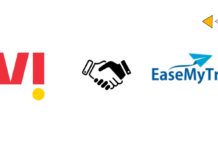Python’s simple easy-to-learn syntax emphasizes readability among programmers and reduces the cost of program maintenance. It supports modules and packages, which encourages program modularity and code reuse. Data science professionals and programmers fall in love with Python because of the increased productivity it provides. It is dynamic, open-source and supports object-oriented programming as well as procedural oriented programming.
FEATURES OF PYTHON:
- DYNAMIC and EASY TO CODE– Deciding the type of the variable at the run time makes it dynamic and is easier to learn as it is developer friendly.
- FREE and OPEN SOURCE– It’s freely available at the official website and source code is also available to the public making it easier to download.
- OBJECT-ORIENTED LANGUAGE– It supports object-oriented language, concepts of classes and objects encapsulation, etc.
- GUI PROGRAMMING SUPPORT– Graphical user interfaces can be made by using PyQt5, PyQt4, wxPython or Tk in python.
- HIGH-LEVEL LANGUAGE– When we write programs in Python, we do not need to remember the system architecture nor do we need to manage the memory.
- EXTENSIBLE FEATURE– We can write some easy Python code into C or C++ language and compile that code in C/ C++ language.
- PORTABLE, INTEGRATED and INTERPRETED LANGUAGE– We can easily integrate other languages like C, C++, etc with Python and a python code is executed line by line at a time, hence makes it easier to debug our code.
- LARGE STANDARD LIBRARY– It provides a rich set of module and functions so you do not have to write your own code for every single thing like- regular expressions, unit-testing, web browsers, etc.
Python has been a revolutionary invention when it comes to effective programming and it differs widely from other competing programming languages as it is used in developing many popular web products like- YouTube, Google, Yahoo! Map, Shopzilla, Ultraseek, etc. A comparison between Python and other languages is a must to understand the viability and efficacy of the languages.
| PYTHON | GO | JULIA | C++ | JAVA |
| Object-oriented | Supports concurrency | Free, open-source and MIT licensed program | Procedural and object-oriented programming | Complex learning curve |
| Shareableandsupports coding | No error handling | Supports encoding | Easy installation | Difficult to code |
| Slower | Faster | Quick and compact user-defined types as built-ins | Faster | Even slower than Python |
| Big community | Easier to read | Easy to learn with Math friendly syntax | Complex syntax, difficult to read and write | Huge documentation required |
| Interpreted | Compiled | Compiled | Pre-compiled | Compiled |
| Dynamically typed | Statistically typed | Statistically typed | Statistically typed | |
| Programmer centric | For systems | For low level systems programming | For game programming | For systems |
| Automated Garbage collection, No memory management | Garbage collector | Garbage collector | Doesn’t contain garbage collector | Garbage collector |
This in-depth differentiation among varied programming languages brings us to talk about the easily accessible Python libraries, that claim to be highly effective and ease your way through programming streams. Python libraries are a set of useful functions that eliminate the need for writing codes from scratch. The package consists of over 137,000 Python libraries that play a vital role in developing ML, data science, data visualization, image and data manipulation applications and much more. Before we delve deeper, let’s understand what a library is? It is a collection of pre-combined codes that can be used to reduce the time required to code and are useful for accessing the pre-written frequently used codes and are reusable resources.
Expansive list of Python Libraries:
- Scikit- Learn
- NuPic
- Ramp
- NumPy
- Pipenv
- TensorFlow
- Bob
- PyTorch
- PyBrain
- MILK
- Keras
- Dash
- Pandas
- Scipy
- Matplotlib
- Theano
- SymPy
- Caffe2
- Seaborn
- Hebel
- Chainer
- Open CV Python
- NLTK
- SQLAlchemy
- Bokeh
Here’s a list of interesting and important Python libraries that are incredibly resourceful for Data scientists:
- Scrapy
- BeautifulSoup
- StatsModels
- XGBoost
- Plotly
- Pydot
- Genism
- PyOD
Python for data scientists, being one of the most popular languages in the world, has gone through many iterations to match the changing needs of developers and technology trends. What started as one man’s side project has now advanced to be the fastest growing language in the world and is now a tool of choice for the next generation of data-driven AI-solutions. From Pre-launch to 3.9, Python has seen humungous changes to assist programmers efficiently. From Python 1 being launched back in 1994 with features for functional programming including Lambda, map, filter and reduce, evolved to Python 2 with desired features of Unicode support, list comprehension, garbage collection, hence proving to be truly object-oriented. Python 3.0 is the biggest change the language has undergone as the main foreground of update was to remove fundamental design flaws with the language by deleting duplicate modules and constructs. PRINT is now a built-in function, unification of STR and UNICODE and changes in integer division.Data science professionals have benefited vastly from these updates that the language has gone through and is widely vouched for when it comes to easy programming.
No doubt, Python has evolved tremendously to become the go-to language for elite class of programmers and developers that are simply in love with the language for reasons more than one. Learning Python has proved to be profitable for developers and programmers, that see themselves making it big in the data science world. With other languages trying to compete and capitalize, Python is already well-established and proven in these fields. Python is perfectly positioned to grow along with this historic uptick in data-driven innovations. This brings us to an undeniable fact that a credible data science certification can take you farther and higher in your data science career. Python certification training courses from the best in the industry- Stanford, USDSI, MIT and other recognised brands could definitely help you master the concepts as they provide an opportunity to gain in-depth expertise in writing Python programs and others that use related packages like SciPy, NumPy, Lambda and Web scraping libraries. These advance level courses help you to learn from the industry-experts at your own pace and make you understand the ways of writing Python code for big data. Hence, arming yourself with a data science certification is a must to make it big in your preferred data science role.







